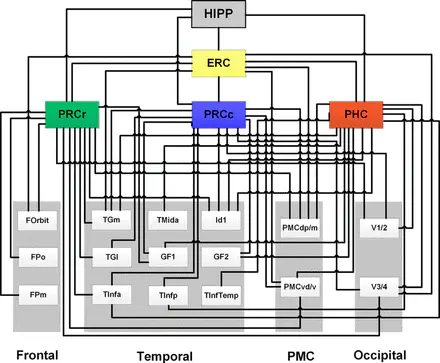Connectivity Profiles Reveal a Transition Subarea in the Parahippocampal Region That Integrates the Anterior Temporal–Posterior Medial Systems
 PHR subregion pbx results
PHR subregion pbx resultsAbstract
Traditional anatomical studies of the parahippocampal region (PHR) defined the lateral portion into two subregions, the perirhinal (PRC) and parahippocampal (PHC) cortices. Based on this organization, several models suggested that the PRC and the PHC play different roles in memory through connections with different memory-related brain networks. To identify the key components of the human PHR, we used a well accepted connection-based parcellation method on two independent datasets. Our parcellation divided the PRC and PHC into three subregions, specifically, the rostral PRC, caudal PRC (PRCc), and PHC. The connectivity profile for each subregion showed that the rostral PRC was connected to the anterior temporal (AT) system and the PHC was connected to the posterior medial (PM) system. The transition area (PRCc) integrated the AT-PM systems. These results suggest that the lateral PHR not only contains functionally segregated subregions, but also contains a functionally integrated subregion.